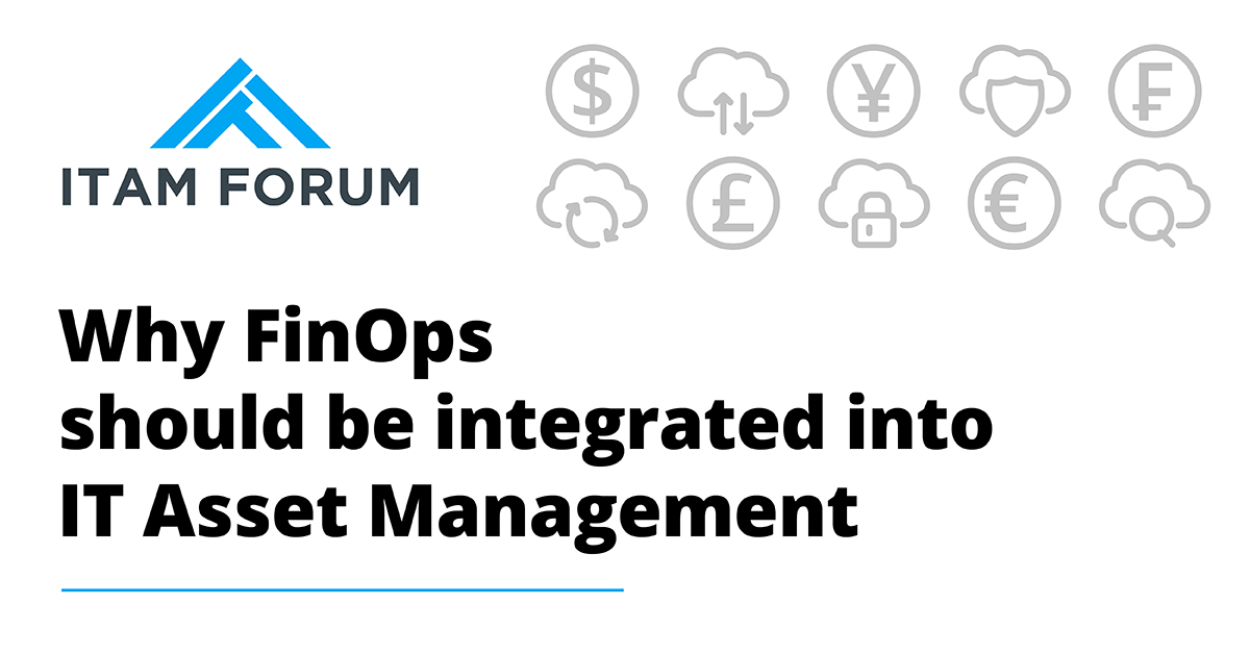Author: Sherry Irwin
Founder of Technology Asset Management Inc; ITAM Forum Trustee, ITAM Forum Canada Chapter Lead
According to the FinOps Foundation Technical Advisory Council, FinOps is “an evolving cloud financial management discipline and cultural practice that enables organizations to get maximum business value by helping engineering, finance, technology and business teams to collaborate on data-driven spending decisions.”
Indeed, other sources describe FinOps as a cost management paradigm shift, which “…strives to bring together technology, business and finance professionals to better understand cloud costs and make more informed decisions”.
Most, if not all, of the coverage suggests that FinOps is a new focus and function, typically driven by and located within the financial organization; and, with its own principles, framework, phases, maturity model and practices (capabilities).
In my view, cloud financial management should be integrated within the ITAM program, particularly at higher levels of ITAM maturity where ITAM is focused on both the physical and fiscal aspects of the IT asset portfolios. For example, IT asset management in addition to IT asset tracking; in some organizations, this is already the case.
Considerations include:
- IT services are included as an IT asset type in the ISO/IEC 19770-1 standard. This would include external (off premises) services, such as cloud, as well as more traditional services such as product maintenance, support and training.
- ITAM has always been concerned about lifecycle costs for IT assets and services – of any type. At present, FinOps seems focused primarily on cost/spend, which clearly is within ITAM’s mandate.
- Additionally, ITAM is concerned about risk mitigation. External services such as cloud are often comprised of multiple solutions, from multiple suppliers, thereby increasing risk type, magnitude and complexity; and, hence, the need to identify and mitigate those risks – perhaps even more than cost management.
- As an ITAM program matures, there is an added focus on value maximization, commensurate with the relevant costs. This too would apply to cloud services, where usage and value are often lower than contracted services (as a consumption model, similar to subscription licenses, already managed by software asset management (SAM), a subset of ITAM).
- Also, ITAM already brings together IT and corporate professionals to understand and make more informed decisions around investments in IT assets and services; as such, most of those relationships are in place and can be leveraged for cloud services.
- ITAM already has relationships with external suppliers, probably including those providing cloud services. It is likely more effective to leverage those existing relationships rather than create separate ones specific to cloud services.
- In a mature ITAM program, ITAM personnel already have most or all the requisite skills and accountabilities applicable to cloud management, including those below. It would be better to leverage, and improve if necessary, those existing skills and accountabilities.
– IT contracts and contract management
– Vendor management
– Financial management
– Data analysis and reporting
- FinOps principles, framework, phases, maturity model and capabilities seem to largely mirror those of ITAM, albeit using different terminology (hence, a source of confusion).
- Plus, FinOps as a separate function will almost certainly result in duplication and/or inconsistency of processes, policies, resources etc. This creates inefficiencies and confusion within the organization and with its suppliers.
To summarize, a mature, robust ITAM program should be able to accommodate new or different platforms, technologies etc., including cloud services, with minimal change. Fundamentally, at a management level, the objectives, issues, practices etc. are common; at an operational level, there may be some differences, particularly as to supporting ITAM technologies and data.
For more information about ITAM & FinOps, please see the following blogs:
- The ‘what’ and ‘why’ of FinOps
- How to make FinOps work for you
- FinOps: ITAM professional, make your move
- FinOps requires a centralised team
If you’re an ITAM Forum member, log in to access these resources:
- Article: The ITAM evolution: Top ITAM trends for the next 5+ years
- Article: ITAM and FinOps and the Environmental Imperative
- Article: FinOps and the evolving role of ITAM
- On-demand webinar: How ITAM is fundamental to FinOps success
- On-demand webinar: FinOps: What ITAM professionals need to know
- Infographic: How ITAM contributes to FinOps

